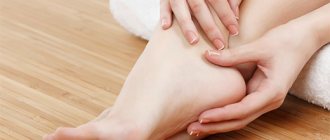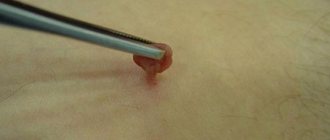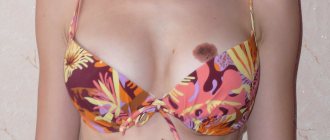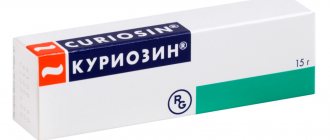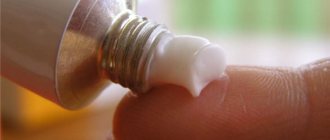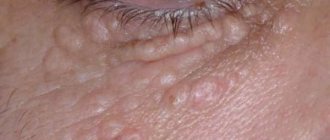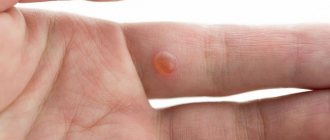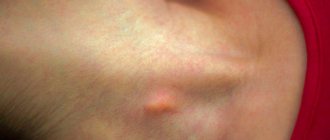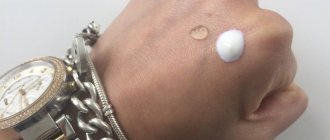Every day we encounter situations where we come into contact with hot surfaces and can get injured. Proper first aid is to numb the burn as quickly as possible.
It is also important to understand what not to do to avoid harming your skin. What to do if you burn your finger, how to relieve the pain? There are several simple and effective ways.
Features of pain relief
Damage to soft tissues from a burn varies in degree. But pain sensations do not always correspond to their level.
The first and second stages affect the superficial layers of the skin. In this case, the nerve endings are injured. They react to a violation of tissue integrity, causing constant excruciating pain.
With deeper injuries (grade 3-4), the damage can reach the bones. The tissues practically burn out and along with them the nerve cells are destroyed. For this reason, a person who has received severe injuries experiences pain when exposed to high temperatures, and then its intensity decreases significantly . After some time, the stage of active regeneration begins, inflammatory processes occur and painful symptoms return. Consequently, with deep burns, the victim rarely needs pain relief. The exception is receiving injuries of varying degrees.
To alleviate the condition of the injured person is one of the main principles of first aid. But this must be done correctly, using special means, otherwise, as a result of illiterate therapy, complications, inflammation and infection develop.
Before taking any action, you should determine:
- source of damage
- degree of damage,
- characteristics of injuries and their location,
- general condition of the victim,
- make sure there are no allergies to the drugs used.
The main first aid methods for burns include:
- cooling the injured area,
- anesthesia,
- disinfection,
- in case of urgent need, apply a transport gel bandage or film.
Assistance to patients with deep injuries should be provided by a qualified specialist in a medical facility. The use of home remedies in this case is unacceptable.
Types and severity
The palm can be burned by boiling water, steam, oil, chemicals, iron, etc. Depending on the area of the damaged skin surface and the duration of its contact with the damaging factor, the burn refers to one of the following degrees:
- Minor injury, in which the skin turns slightly red and there is slight swelling;
- At this degree, the pain becomes stronger, most often blisters appear on the integument;
- The burn is accompanied by a scab, deep tissue damage occurs;
- The most severe and profound degree is characterized by damage not only to the skin, but also to muscles and bones. There is a high probability of death.
Cold on a burn
Cooling with water or ice is a well-known method. To improve the condition, it must be used correctly:
- Do not use too cold water: the liquid must be cool.
- If ice is used, it should be wrapped in a thick layer of cloth and plastic to prevent the threads from sticking to the wound. Its exposure time should not exceed 5 minutes.
- The decrease in temperature should be gradual.
- Cooling under running water lasts about 20 minutes. This procedure will have a longer lasting analgesic effect and will not harm the affected surface even more.
These rules are based on the fact that a large temperature difference only worsens the condition of the skin. With sudden cooling, the remaining heat does not come out, but spreads into the deep layers of the dermis, which makes the injury more extensive, and tissue death occurs faster due to frostbite.
If the burn is caused by chemicals or grease (oil), you should first carefully remove any remaining residue. Shake off the powder, protecting your eyes; blot the fat with a bandage, and then place the injured area under running water.
Cooling not only relieves pain, but also slows down the process of heat propagation, which prevents extensive tissue damage. Therefore, it cannot be excluded from the list of mandatory first aid measures.
Prohibited actions
When deciding what to do to prevent the burn from hurting, you need to consider what actions you should never take:
- lubricate a fresh thermal injury with ointment or oil that forms a greasy film that prevents cooling, which is a priority;
- lubricate with alcohol solutions, for example, iodine;
- puncture blisters;
- try to tear off clothing stuck to the wound, it needs to be cut out;
- stick a patch or apply cotton wool;
- treat the burned area with urine.
Painkiller pills
The next step is taking analgesics - special medications that block pain . Before using them, you should make sure that the victim is not allergic to the components and has no contraindications to their use.
The most common medications that are present in every home medicine cabinet are Analgin and Tempalgin. Effective painkillers also include Dollar (Dolaren), Pentalgin, Nise, Solpadeine. All of them have a number of contraindications and side effects, so care should be taken to prevent the victim’s condition from worsening. Some medications may increase bleeding from open wounds.
You should not expect rapid action from tablets: they require time to dissolve and be absorbed into the blood.
Therefore, if the victim feels tolerable, it is better to wait for a doctor who will administer the necessary drug intravenously or intramuscularly . If the medicine was nevertheless taken, doctors should be notified about this so that when providing assistance there is no incompatibility of medications.
Local remedies
Local preparations help disinfect the surface and relieve pain. These include ointments, gels, sprays, solutions and foams. They eliminate painful symptoms faster than tablets, reduce swelling, disinfect the surface, and subsequently promote tissue restoration and regeneration. Before applying them, the wound should be treated with one of the antiseptics:
- Chlorhexidine,
- Miramistin,
- Betadine,
- hydrogen peroxide 3%,
- Furacilin tablet diluted in water.
After this procedure, healing agents are applied. In case of severe burns of III A-IV degrees, their use is prohibited without a doctor’s instructions, since lubrication can cause infection, further injure the affected area, or cause severe pain to the victim. In addition, there is a high probability of overdose of active components due to direct absorption of the drug into the blood, which often leads to disruptions of the central nervous system and the active manifestation of side effects.
For grade 1-3 injuries, such drugs are necessary - they form a protective film and do not allow pathogenic microorganisms to penetrate deep into the wound.
Panthenol
Panthenol is one of the most famous and widespread drugs for skin injuries. The most convenient form of release is spray foam, since application does not require direct contact with the surface, which eliminates the pain of treatment. Thanks to the active component - dexpanthenol - the foam helps reduce inflammation, has a wound-healing and disinfectant effect, and stimulates the process of tissue repair without scarring .
The product is completely safe, has no side effects or contraindications, even when treating a child or a pregnant woman. Panthenol is recommended to have in every home medicine cabinet, as they are allowed to treat any skin damage without the approval of a doctor. It does not accumulate in the body. The acids contained in its composition are included in the structure of biological tissues. It can even treat the oral cavity.
Panthenol is also available in the form of a cream, which is suitable for lubricating minor injuries.
Radevit
Radevit is a fortified ointment with analgesic, antiseptic, regenerating and moisturizing effects. It is used not only for burns, but also to treat other types of injuries. When applied for the first time, metabolism in cells is accelerated, the recovery process is activated, and pain is quickly neutralized . The ointment eliminates itching, prevents peeling and cracking of the resulting crusts during the healing process.
The drug does not contain harmful substances, so it can be used by pregnant women and children (even under the age of 1 year). Therapy should not last more than two weeks. The shelf life of the product after opening is limited to 3 months. Radevit has a thick, oily consistency, is absorbed slowly and can leave marks on clothes.
Bepanten plus
The active component of Bepanten Plus cream, like Panthenol, is dexpanthenol, so it has similar properties. In addition, the drug contains an antimicrobial complex, quickly relieves pain and cools the surface well. Can be used in the treatment of infants and pregnant women.
Sulfargin
Modern remedies include Sulfargin ointment. It effectively soothes the inflamed surface, disinfects and promotes active healing. When applied to the affected skin, the burning sensation quickly goes away . The ointment is easily absorbed and leaves no residue. It is recommended to use it as a compress during the treatment process: the composition is applied to the damaged area, covered with a film and bandaged with a bandage. Leave for about an hour. Residues are carefully removed, but not washed off, so as not to disrupt the integrity of the resulting protective film. Compresses should not be applied when providing first aid.
Olazol
Another product in the form of a spray is Olazol. It can be used for an unlimited time, but before applying it, you should rule out allergies to the components (chloramphenicol, anesthesin, sea buckthorn oil) by doing a test on the wrist. The foam can be applied every time the injury begins to hurt badly. Its complex effect allows you to replace several types of medications at once, which makes it profitable and quite in demand.
First aid
At the time of injury, every second is precious, so it is important to know and be able to correctly provide assistance to the victim. Indeed, with extensive lesions, the burn hurts significantly, and here you need to know how to quickly relieve the pain from the burn, which is usually unbearable and can lead to shock.
Sequence of actions to relieve pain from a burn:
- Remove the traumatic factor to stop its impact.
- Cooling the injured area is paramount.
- To disinfect areas of hemorrhages and open wounds, you can use hydrogen peroxide, Chlorhexidine, Miramistin or a solution of potassium permanganate.
- Give painkillers in tablets or intravenously.
- Apply local products to relieve pain, swelling, inflammation and improve tissue regeneration. These are medicinal ointments, gels, lotions, sprays or folk remedies.
- Apply a sterile bandage.
- If the damage is extensive and deep, call an ambulance.
Intramuscular drugs
It is important to remember that subcutaneous, intramuscular and intravenous injections should not be performed without appropriate preparation. Such analgesics should only be administered by a healthcare professional.
For this reason, they cannot be purchased in pharmacies without a prescription. Medicines in injections are more potent than tablets. They have a number of contraindications. Exceeding the permissible dosage causes respiratory and cardiac arrest . Violation of the process of introducing a particular drug leads to serious consequences.
Emergency physicians often use synthetic morphine substitutes - Promedol and Moradol. They act quickly and safely, but have their side effects. Moradol is not administered to persons under 18 years of age. If there is a threat of life-threatening painful shock, the doctor may inject morphine.
Traditional methods
Some victims or first aid providers often use alternative medicine techniques. Doing this is strictly prohibited. Traditional methods of treatment can be used at home during the healing process of injuries or for first-degree burns.
- A compress of grated raw potatoes relieves pain well. The pulp is squeezed out, placed between layers of gauze and secured to the affected area with a bandage. Leave for 15-20 minutes.
- Aloe pulp or juice effectively eliminates pain, disinfects the surface and cools it. The plant mass is applied to the damaged area and fixed for 30 minutes.
- Lubricating with fermented milk products (kefir, sour cream, yoghurt, fermented baked milk) cools the skin and neutralizes the burning sensation.
Such treatment methods can be used in conditions where quick medical care is not available, for minor closed injuries and only after cooling. They should not be used on open, oozing, inflamed or infected wounds .
